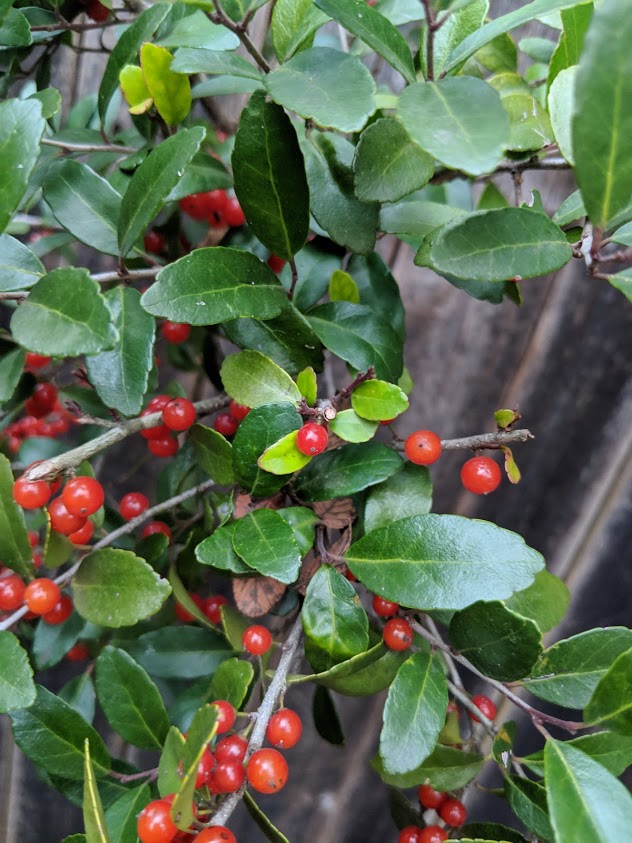Homemade Yaupon Tea

The yaupon holly is a fascinating plant with a checkered past. If you live in the southeastern part of the US, you probably walk past this unassuming shrub in the wilderness and landscape installations all the time. While it is the only caffeinated plant native to North America, it has not enjoyed the same widespread consumption as the beans of the Coffea plants or the leaves of the Camellia sinensis (coffee and tea, respectively).
Native Americans have long enjoyed the energy benefits of tea made from Yaupon leaves. While the berries are poisonous (not deadly) to humans, there was a long-held misconception about the effects of consuming yaupon. In his book Black Drink: A Native American Tea, Charles Hudson explains how settlers from the new world saw natives partake in a (to them) bizarre ritual that included drinking a black tea that caused them to act strangely and vomit. As such, the yaupon holly was given the unfortunate and ill-informed scientific nomenclature Ilex Vomitoria by botanist William Alton.
It’s unclear exactly what those natives were actually drinking, but as it turns out, the leaves and stems of the yaupon holly contain no emetics at all, are quite safe, and are actually very useful for making tea with significant caffeine content. As well, yaupon tea contains theobromine. Theobromine is found in dark chocolate and other herbal infusions like Yerba Mate, and offers an energy and cognitive boost similar to caffeine. While many other health benefits are purported, I will leave that research to you.
In my backyard, I have yaupon holly draped all over my fence, so I took to stripping leaves one day with the goal of making my own tea. As with any DIY endeavor that involves food or drink, the first few iterations needed some tweaking. I will spare you those details, and instead give you the successful version I am using to this day. This particular method gives a fuller-bodied drink that can be enjoyed hot or iced. It’s somewhere between oolong and black tea in color and intensity.

I am at the point now where I drink yaupon almost exclusively when I get a craving for tea. It’s free, it’s delicious, it wakes me up, and I get to tell a cool story about how I made it. I mean, think of the possibilities: a tea that gives you a chance to talk about yourself!

Comment below if you have any experience with yaupon tea!

Homemade Yaupon Tea
Instructions
-
Pick the Leaves
Strip several branches of their leaves. Exclude berries. Some enthusiasts insist on only picking new leaves, but I found that it made only a very minor difference in final flavor. I certainly don’t aim to get a lot of stems in my harvest, but I don’t obsess if they end up being picked. They have all the good stuff in them too.
-
Bruise the Leaves
This is an easy step to forget, but don’t! My batches are small enough to do it by hand, so I simply grab handfuls of fresh leaves and crush them over and over again. This seems to aid the process of enzymatic oxidation that turns plants to tea.
-
Dry
I use my handy DIY herb dryer to do step outdors, but you can also do it indoors by making sure there is good airflow above and below. Once or twice a day, turn and sift the leaves so they dry more evenly. Outdoors, this might take two days. Indoors, plan for three.
-
Bake
Toast the leaves for 3-5 minutes in the oven at 300 degrees. If you want to experiment with “roastier” flavors, then add some time. Just don’t take it too far and end up with ash-flavored tea.
-
Chop and Store
If you want loose leaf tea, you are done! Just put the tea in a canister or bags. If you would like to get a few more servings out of your bounty, crush them up by hand, or stick them in a food processor for a few seconds. You can enjoy yaupon in any preparation you would with standard tea.



